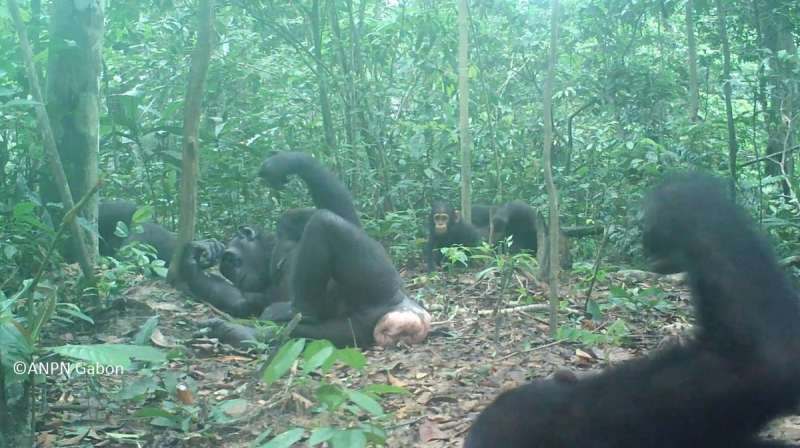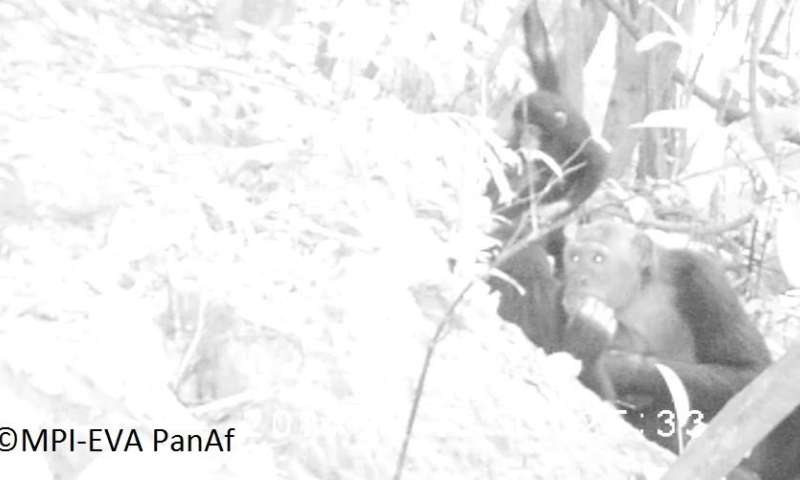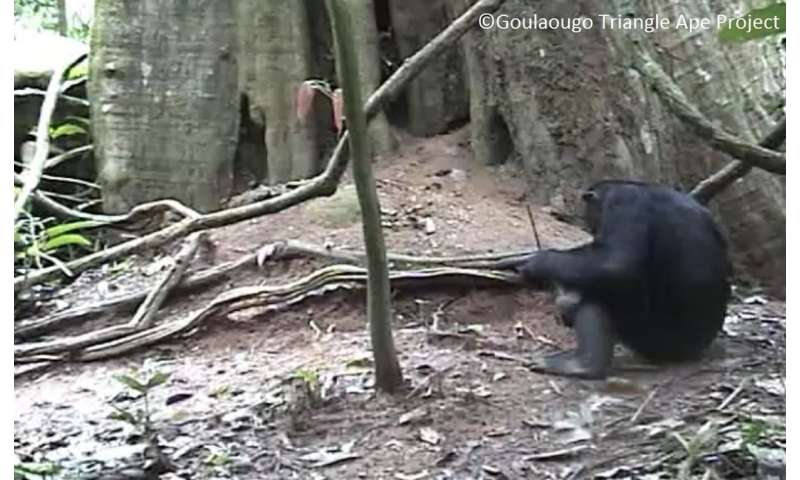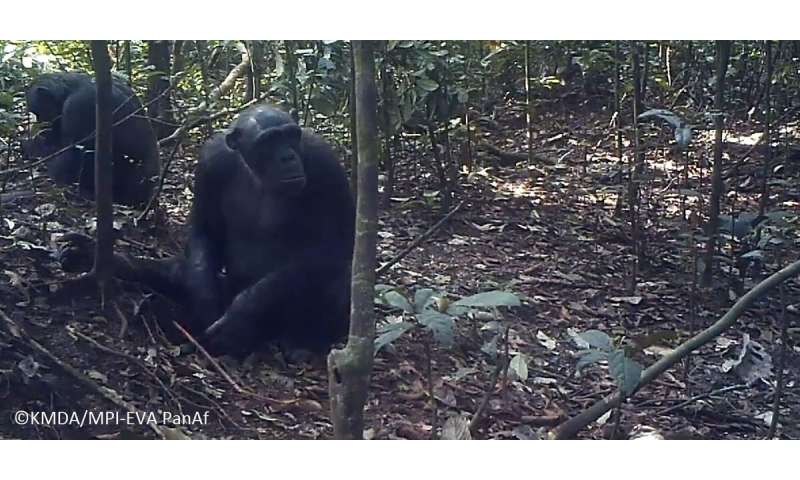May 26, 2020 report
Termite fishing techniques in wild chimpanzees show some elements of cultural diversity

An international team of researchers has found evidence of what appears to be cultural diversity between wild chimpanzee communities. In their paper published in the journal Nature Human Behavior, the group discusses their study of video of chimps in the wild engaging in termite fishing and what they learned about them.
Approximately 60 years ago, primatologist and anthropologist Jane Goodall found evidence of termite fishing in wild chimpanzees. It was the first example ever recorded of tool use by a species other than human. Termite fishing by chimpanzees involves breaking a twig off of a tree, removing its leaves and then poking it into a nest to collect ants to eat—ants are an important source of protein. In this new effort, the researchers have found that chimps living in different communities have developed slightly different approaches to termite fishing—an example of cultural diversity.
The work involved studying trap-camera video of chimps going about their days without human interference. The camera traps had been set up by groups studying different communities of chimps in locations around Africa—the cameras begin filming when they detect motion. In all, the cameras recorded the activities of chimps living in 10 communities that were far enough apart that the chimps could not mingle. The researchers focused on termite fishing, and immediately found two major differences—some communities fished in aboveground ant nests, while other groups fished in underground nests.
And there were other differences, too, some of which were unique to a given community. One group in a community called Kayan, for example, fished only in aboveground nests and used only soft sticks. And after biting off the end of the stick, the chimps tended to lean on one forearm while fishing and used just one hand to bring the stick with ants on it into their mouths. Chimps in another community called Goualougo would use only rigid sticks, and they would scratch at the tunnel entrance to the ant nest with their fingers, insert their stick, then use both hands to pull it out. They then used one hand to remove the ants from the stick, which they then ate.
-

Korup chimpanzees in Cameroon lean on their elbows to termite fish. Credit: MPI-EVA PanAf -

Chimpanzees from Goualougo in the Republic of Congo sit while fishing. Credit: Goulaougo Triangle Ape Project -

In La Belgique in Cameroon, chimpanzees open the stick's fibers to obtain a long brush and then rest the termite-covered stick on their wrist while they eat. Credit: KMDA/MPI-EVA PanAf
The researchers suggest the differences in technique are similar to those used by different people using chopsticks, and therefore represent cultural differences.
More information: Christophe Boesch et al. Chimpanzee ethnography reveals unexpected cultural diversity, Nature Human Behaviour (2020). DOI: 10.1038/s41562-020-0890-1
Journal information: Nature Human Behaviour
© 2020 Science X Network





















